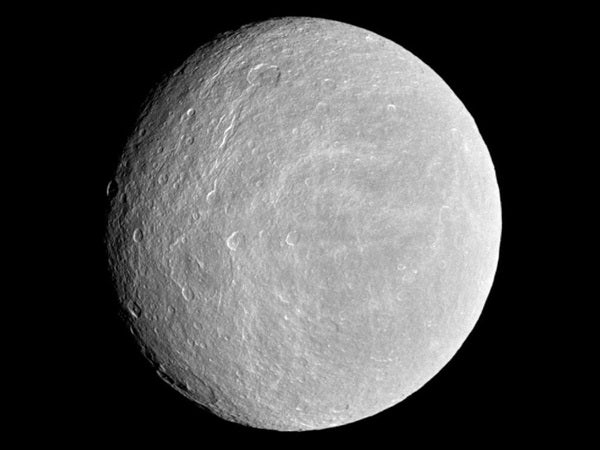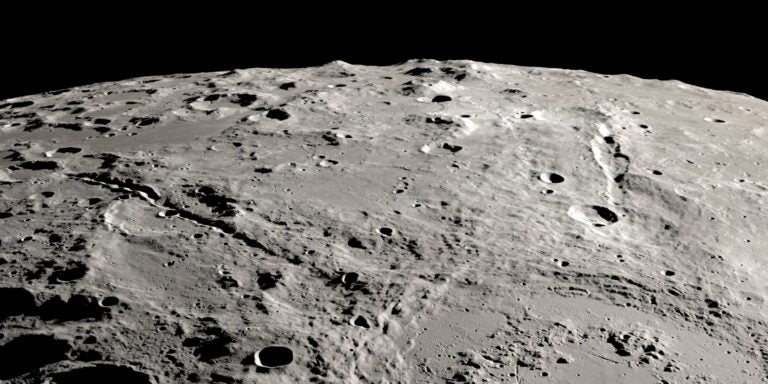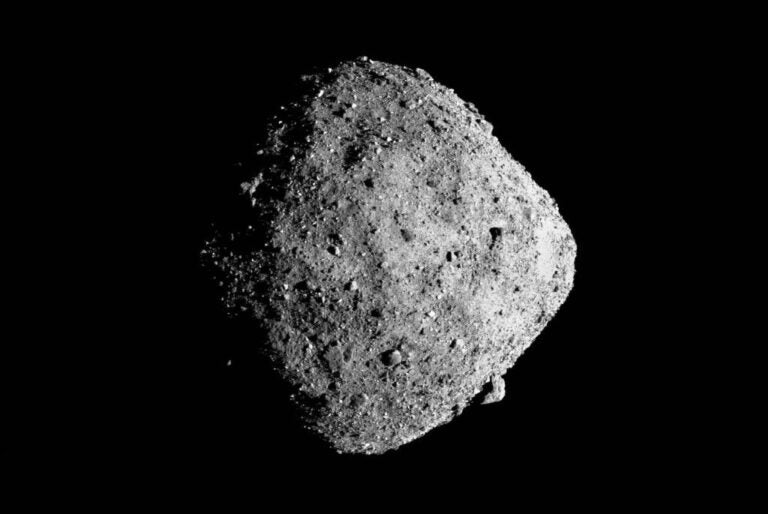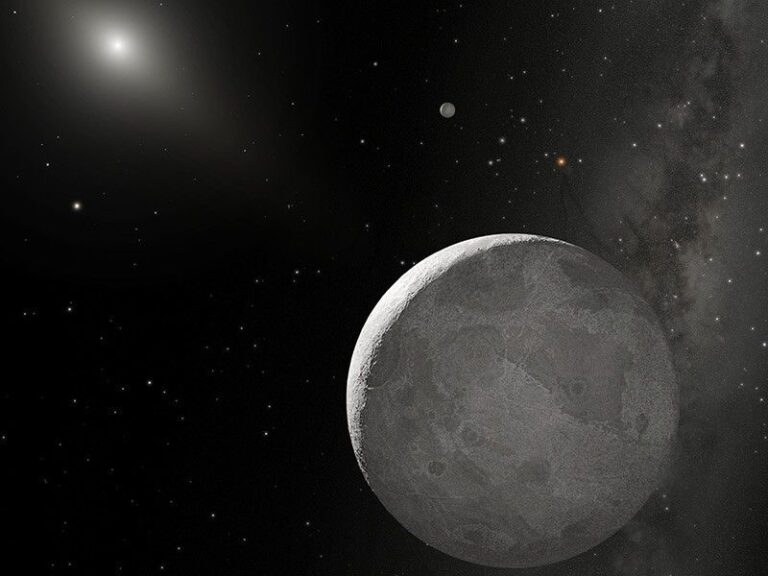The image at right represents one of the highest resolution color views of Rhea released to date.
Both views are orthographic projections facing toward terrain on the trailing hemisphere of Rhea. An orthographic view is most like the view seen by a distant observer looking through a telescope. The views have been rotated so that north on Rhea is up.
Cassini’s orbit will remain nearly equatorial for the remainder of 2015, during which the spacecraft will have four close encounters with Titan, two with Dione, and three with the geyser-moon Enceladus.
The two views of Rhea were taken about an hour and a half apart February 9, 2015, when Cassini was about 30,000 to 50,000 miles (50,000 to 80,000 kilometers) away from the moon. Cassini officially began its new set of equatorial orbits March 16.
The views show an expanded range of colors from those visible to human eyes in order to highlight subtle color variations across Rhea’s surface. In natural color, the moon’s surface is fairly uniform. The image at right represents the highest-resolution color view of Rhea released to date.










